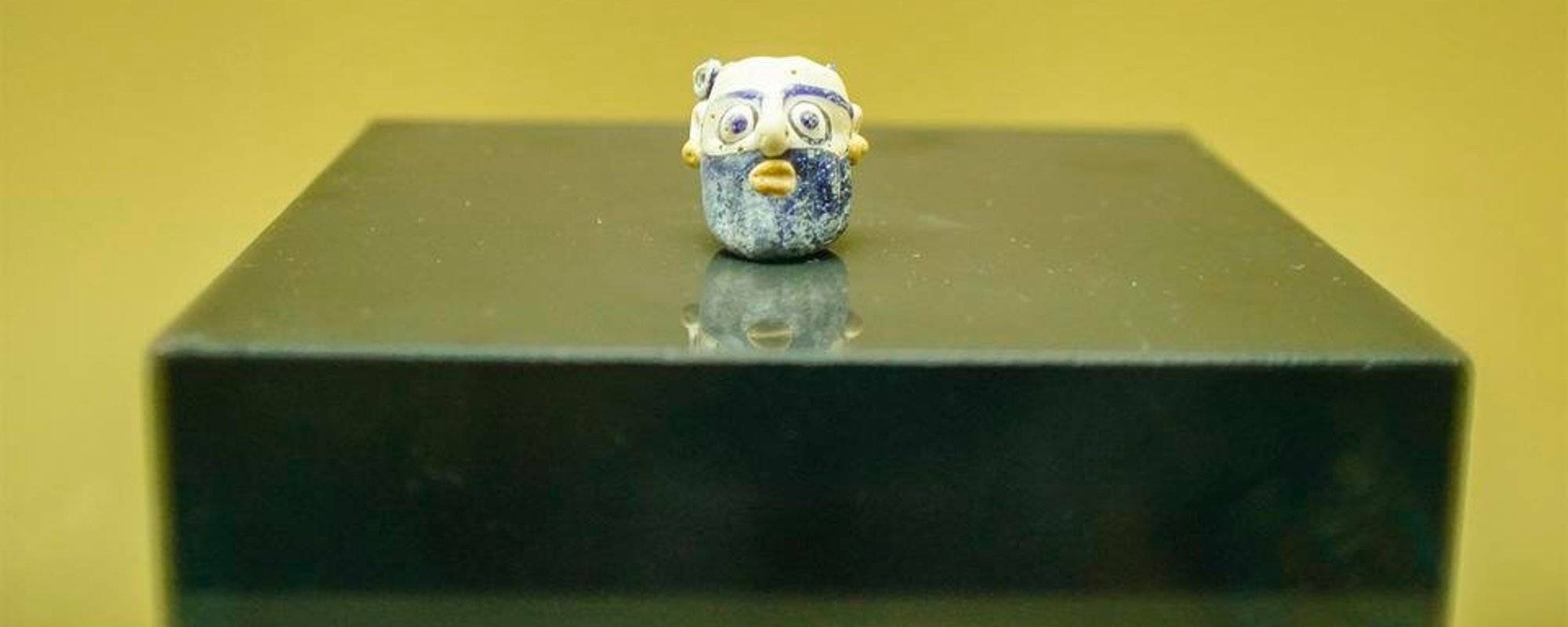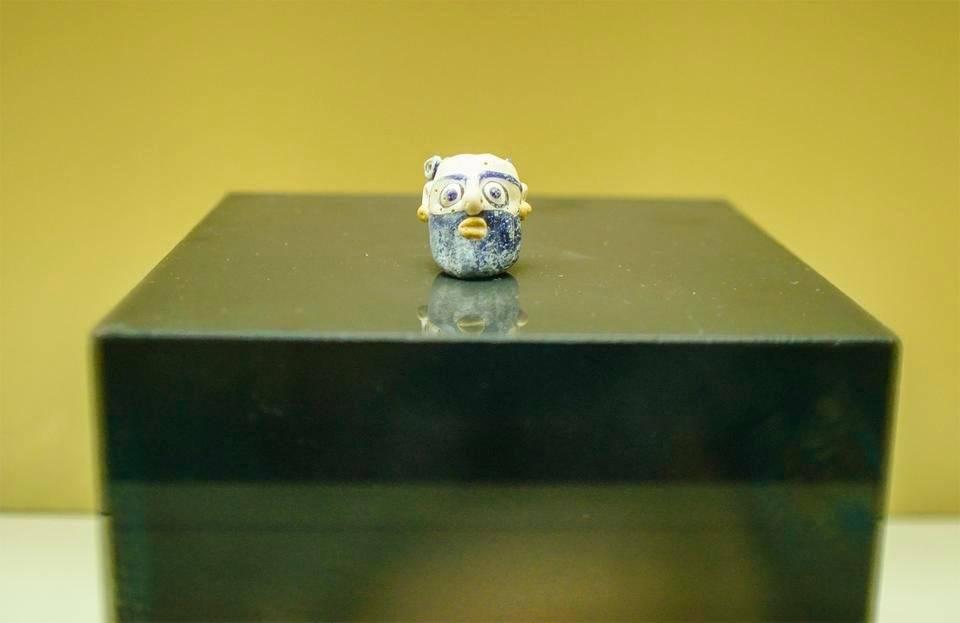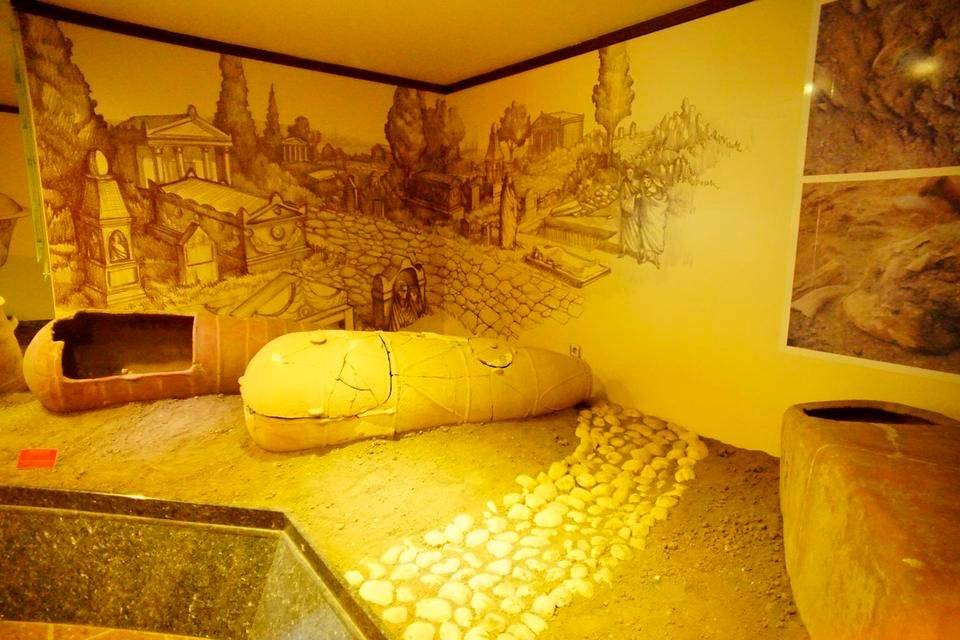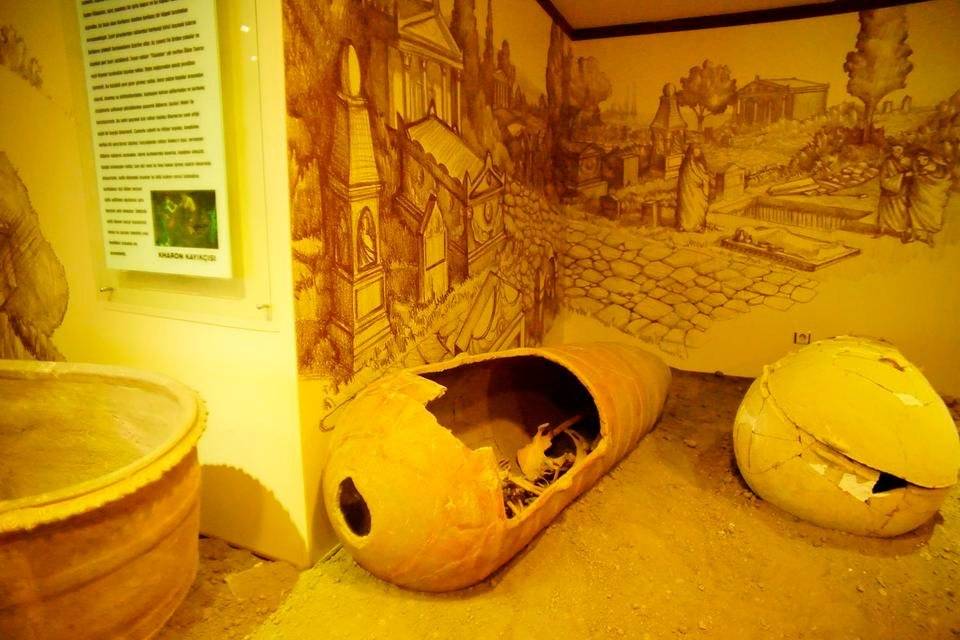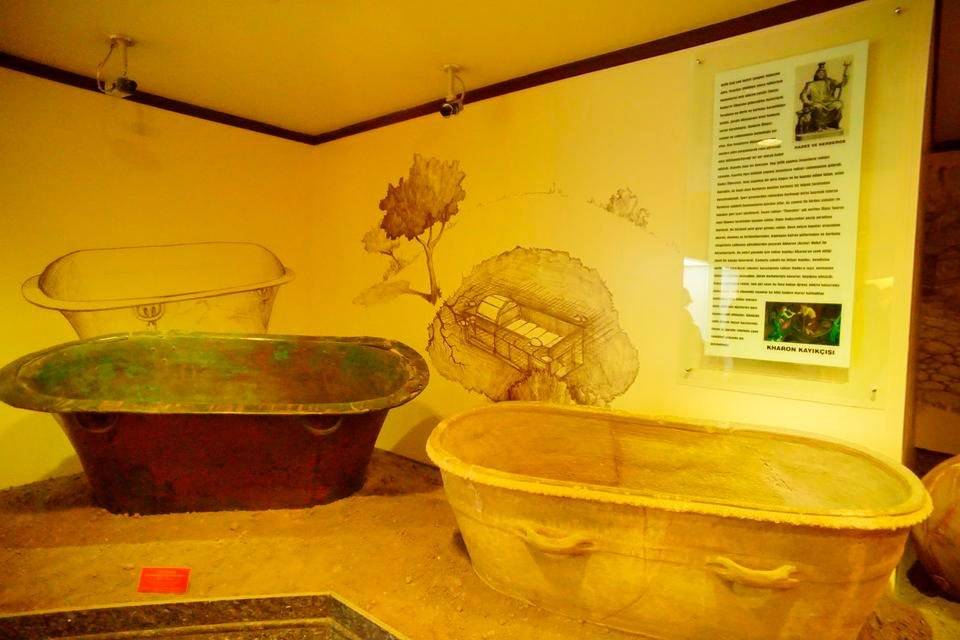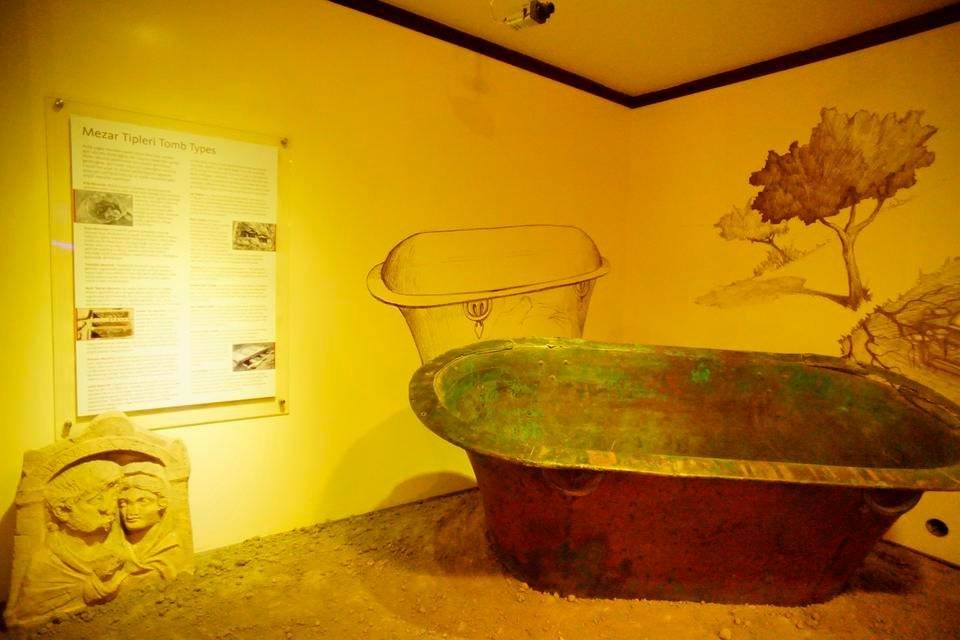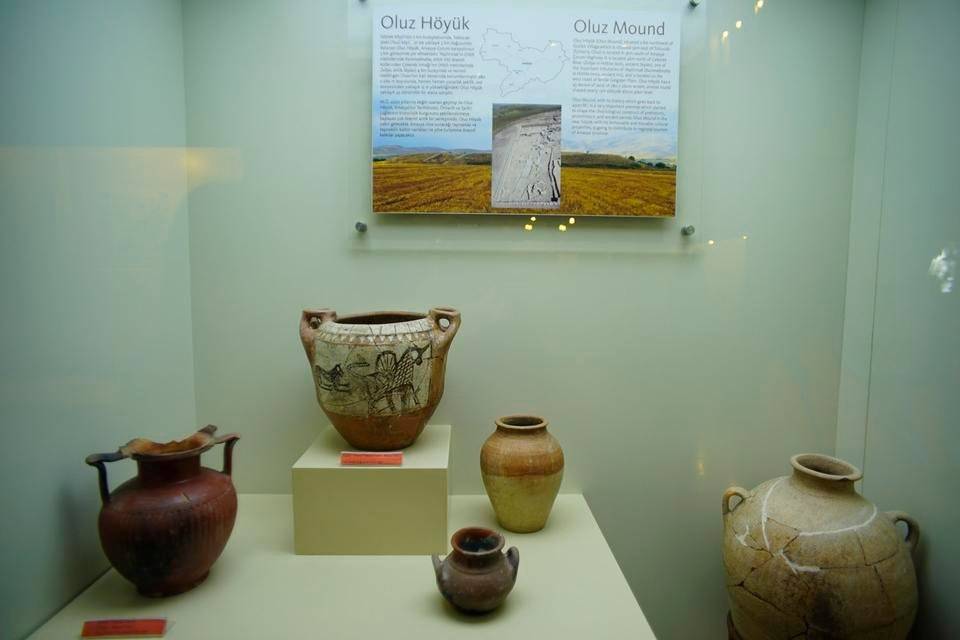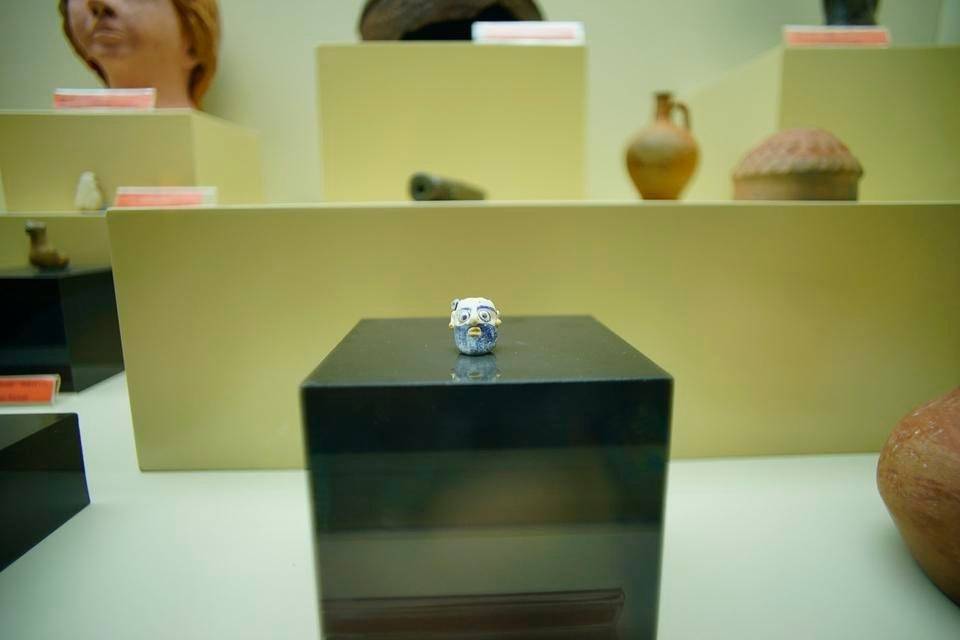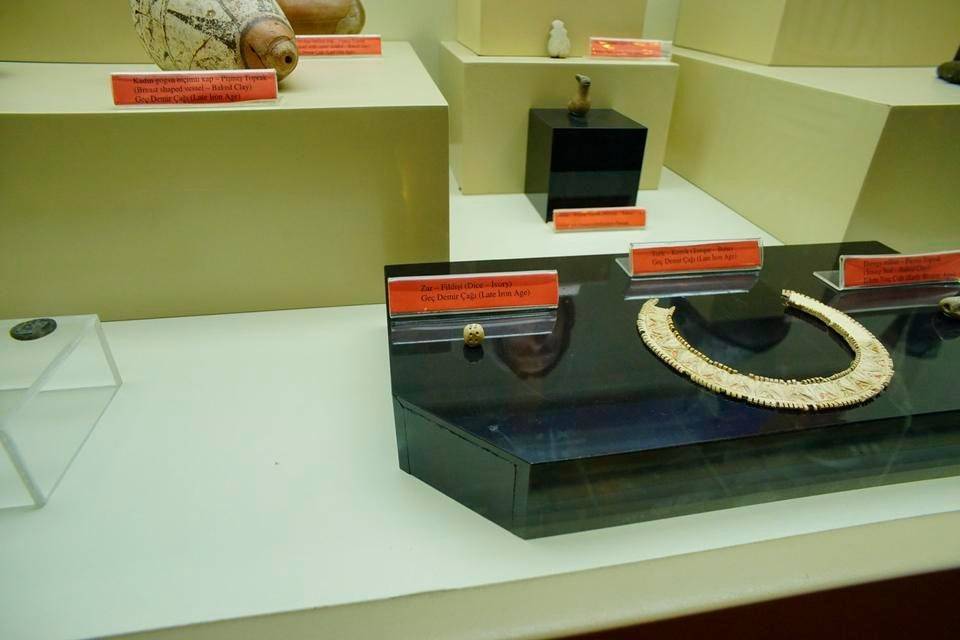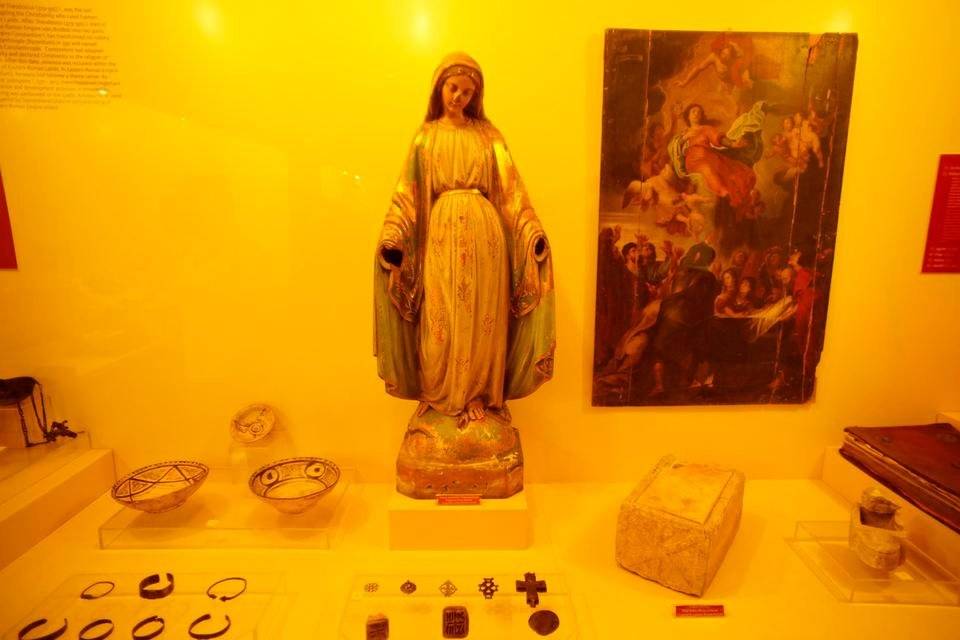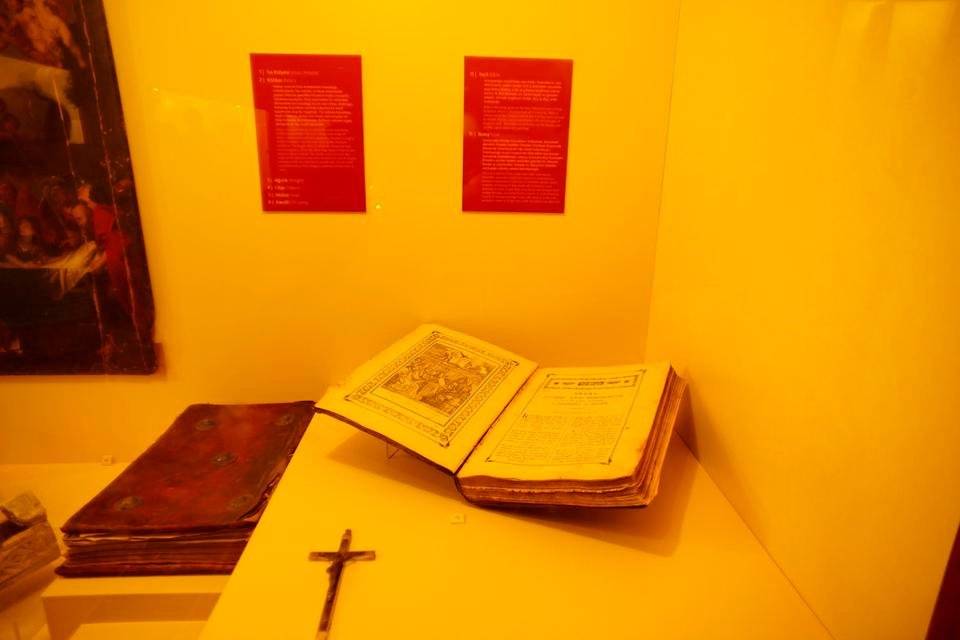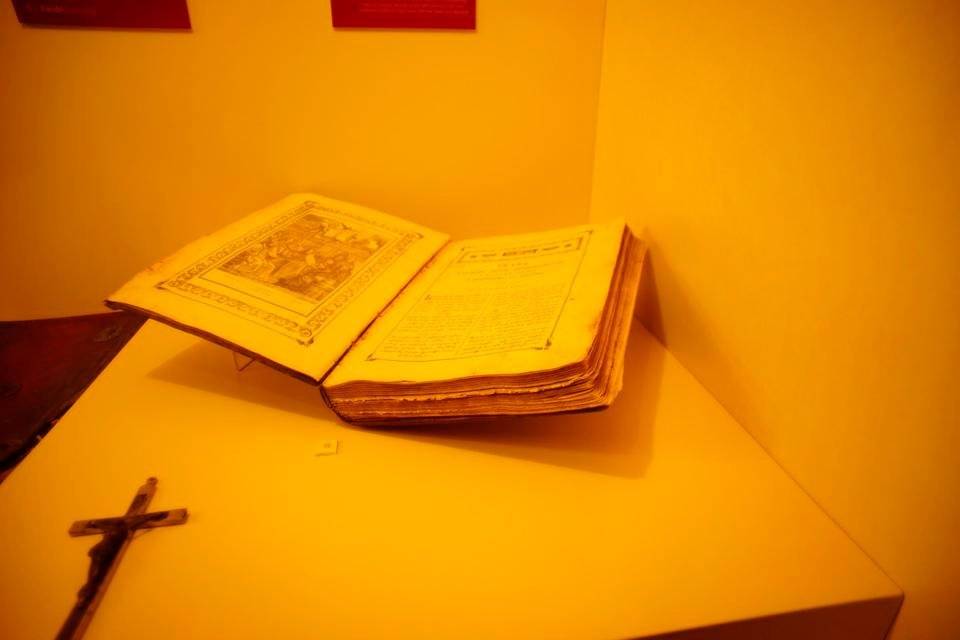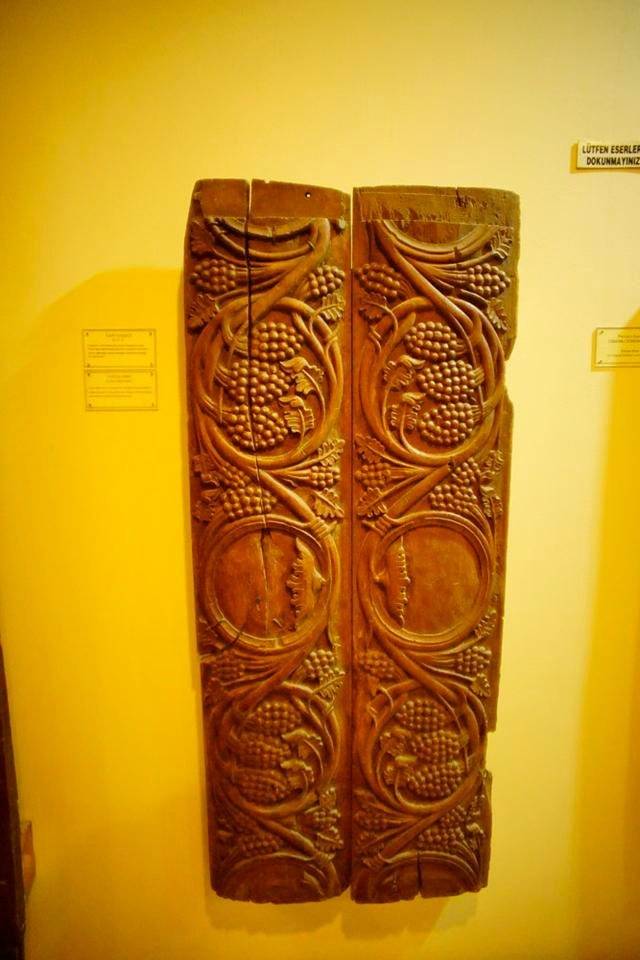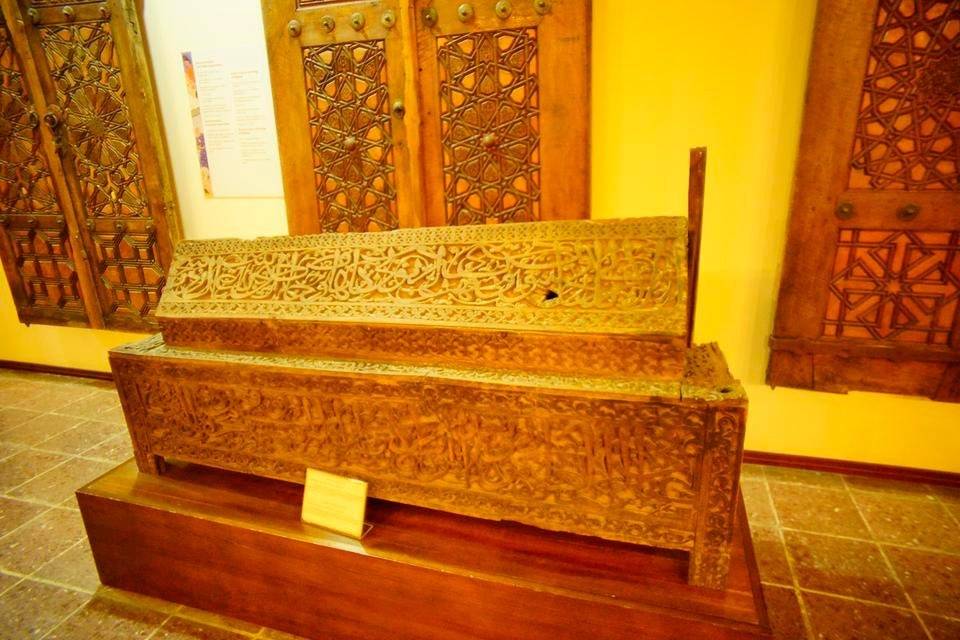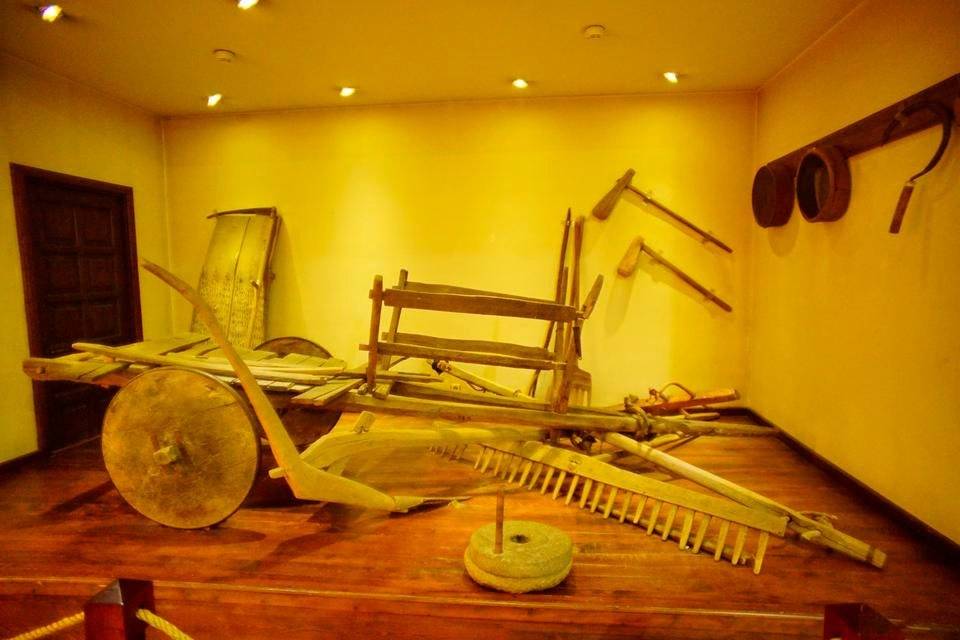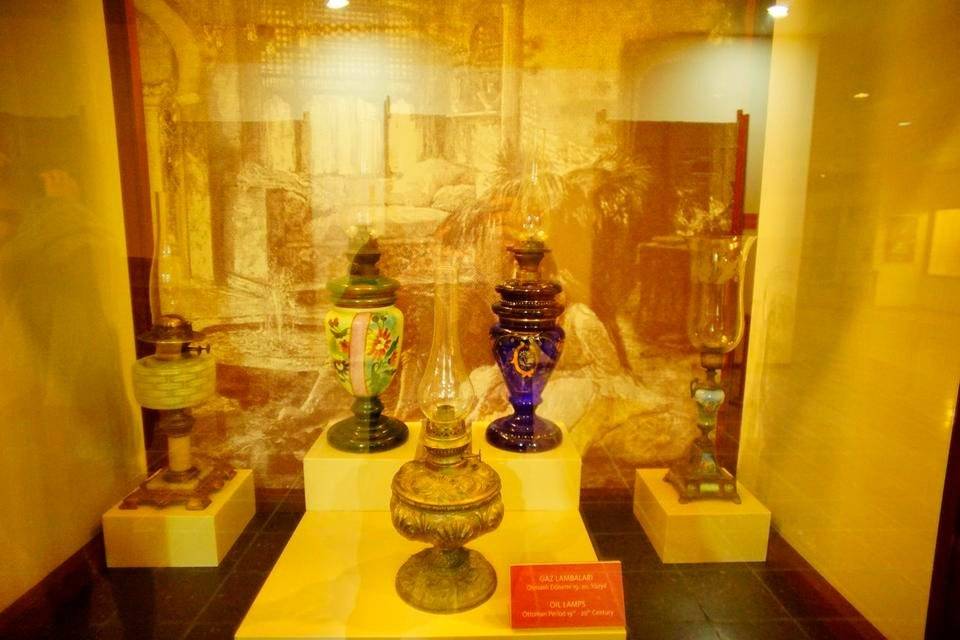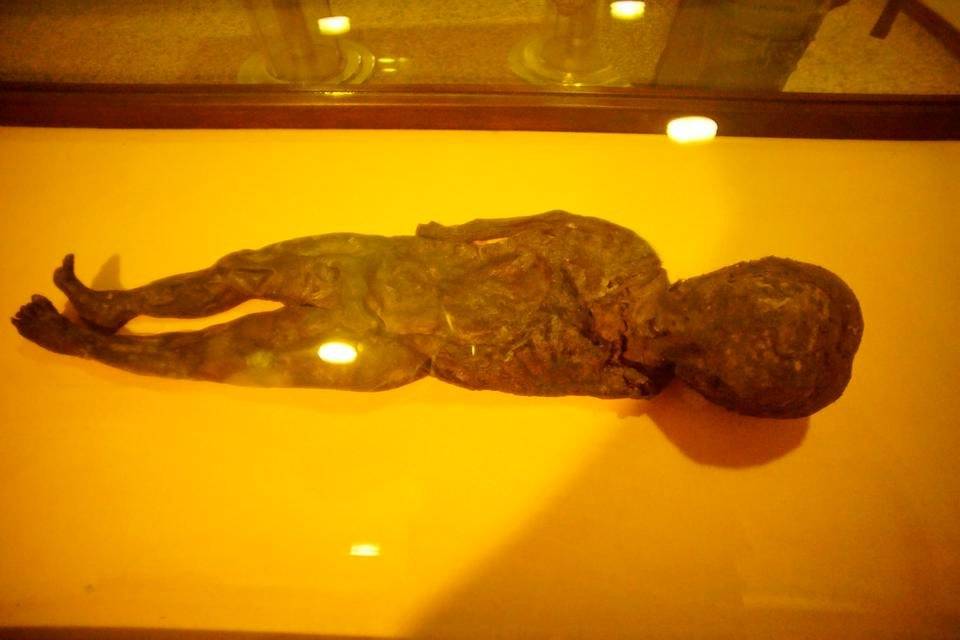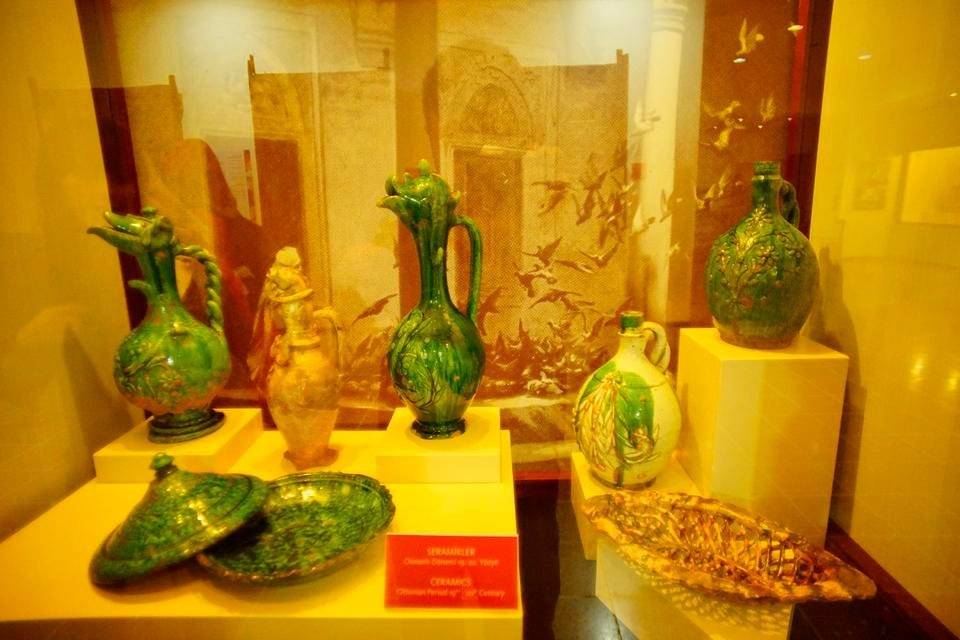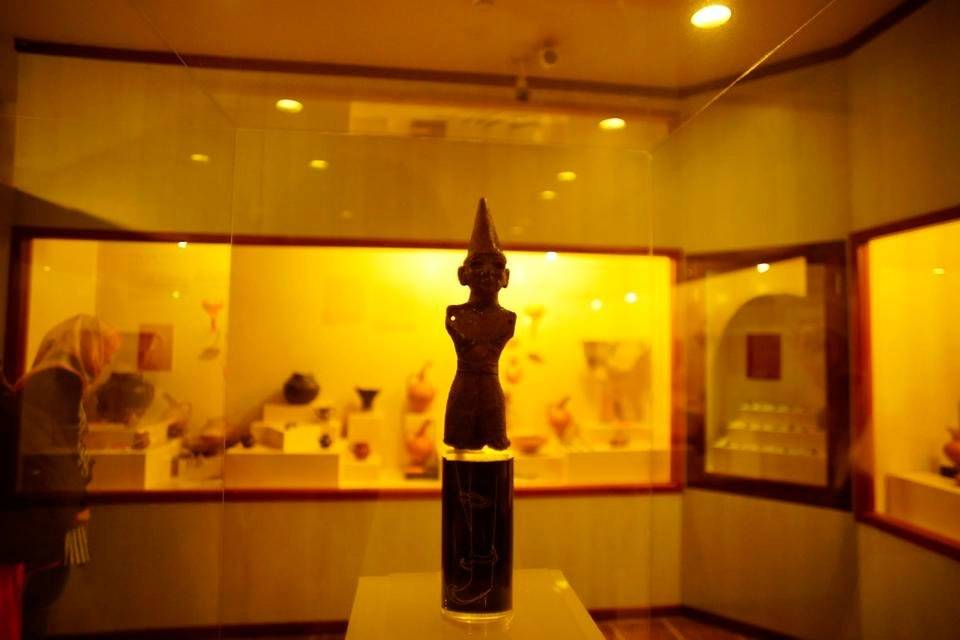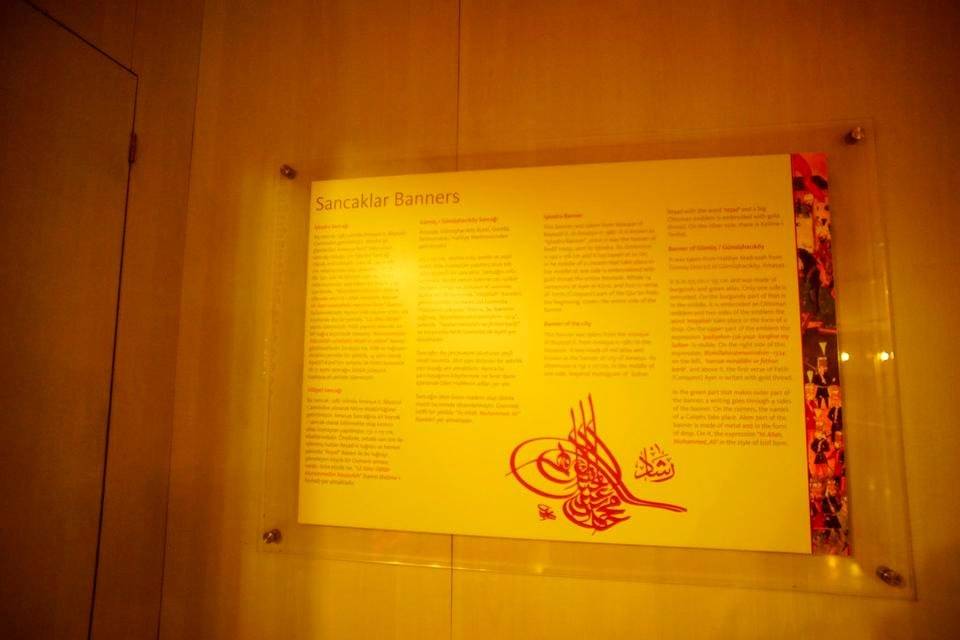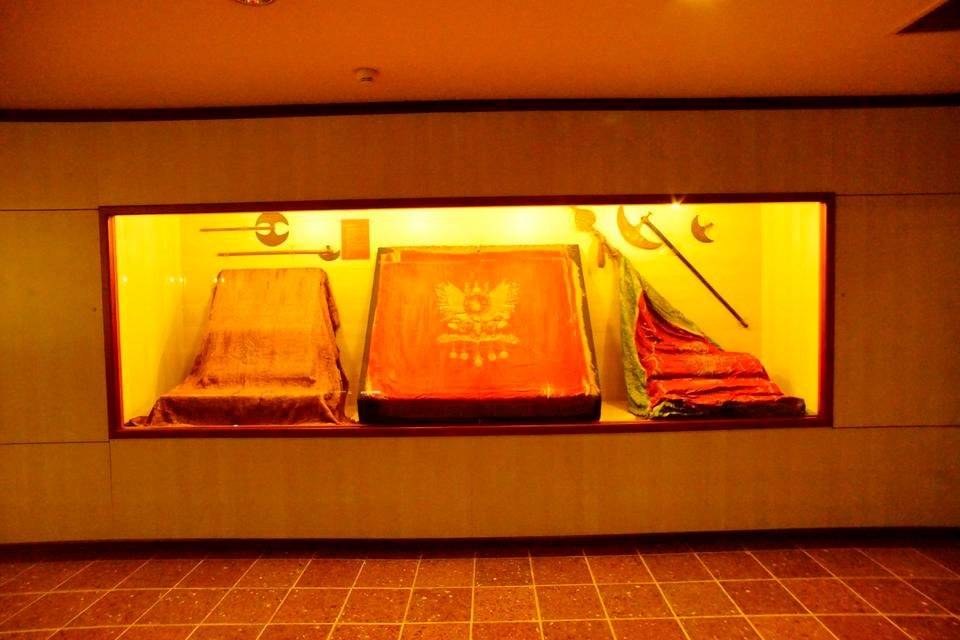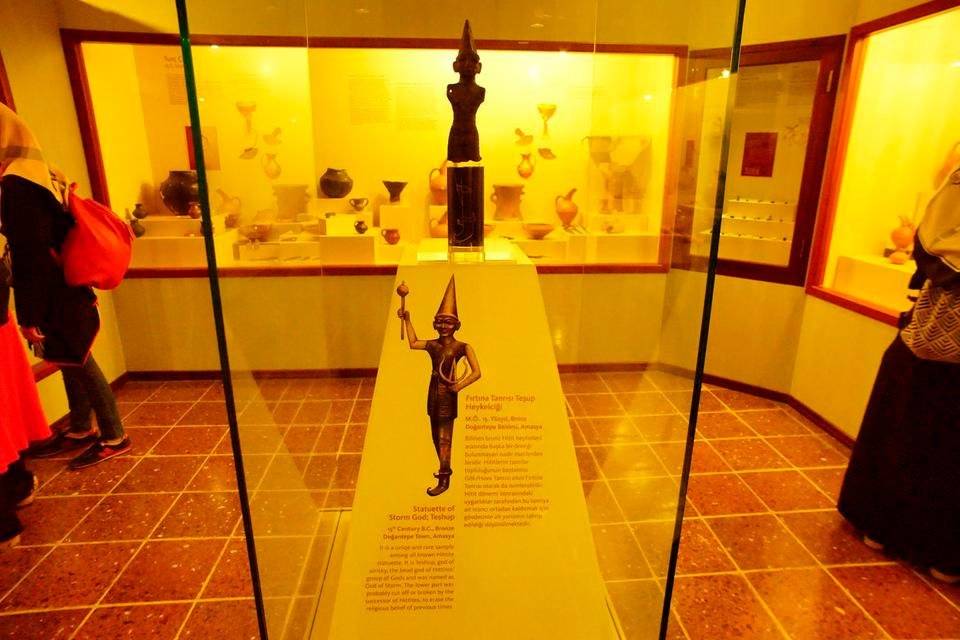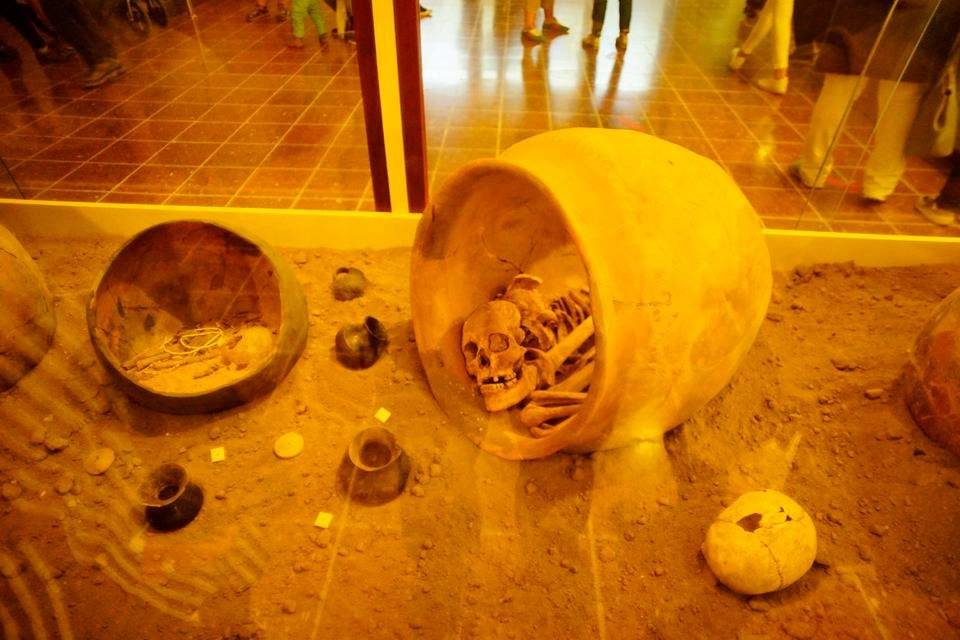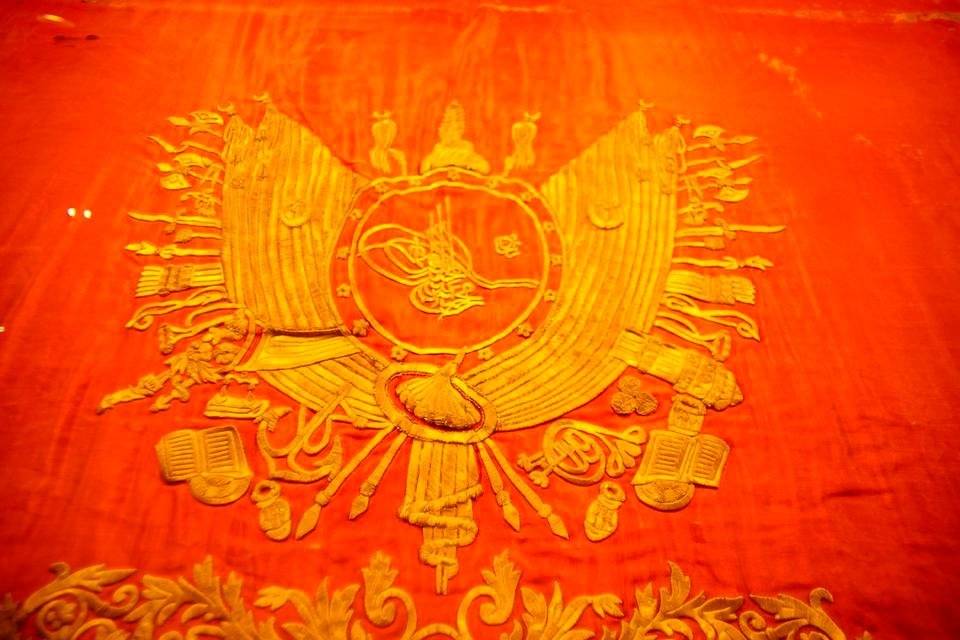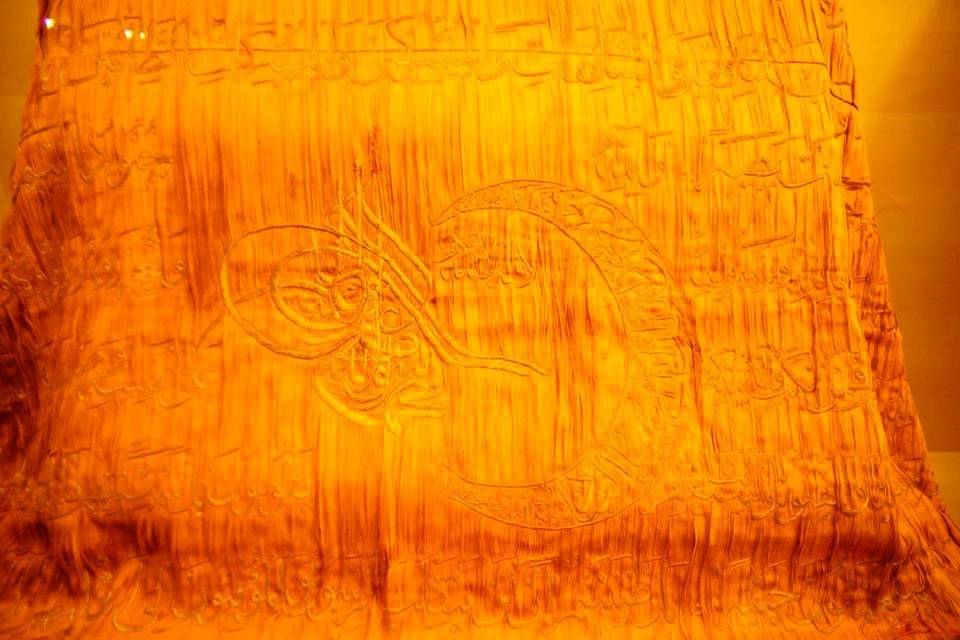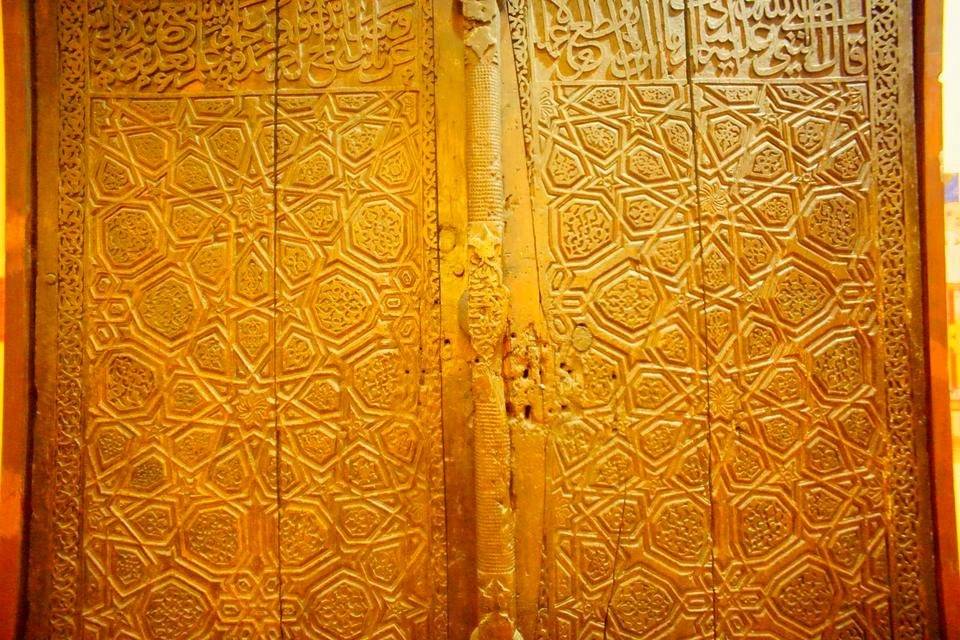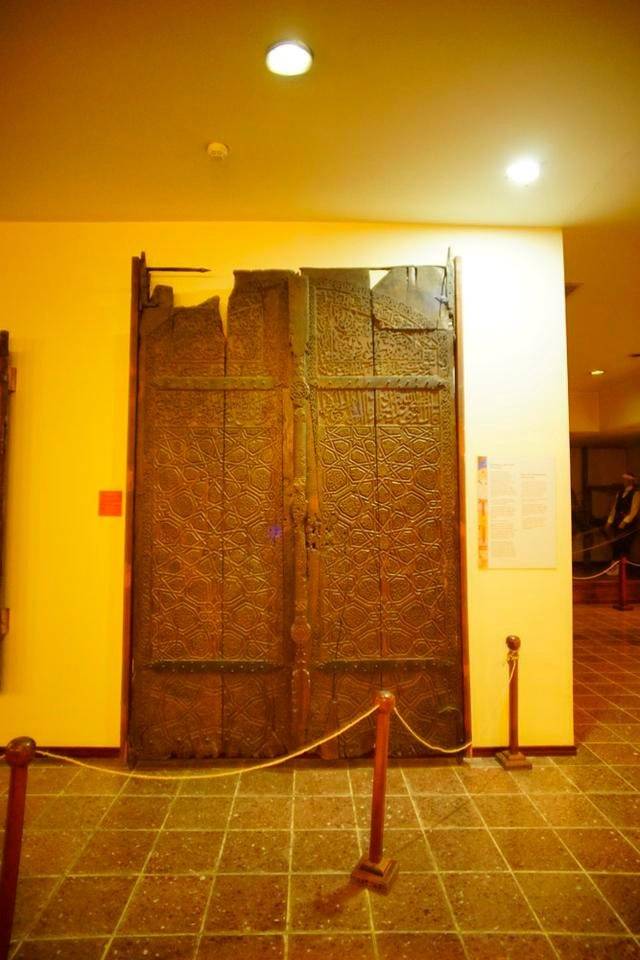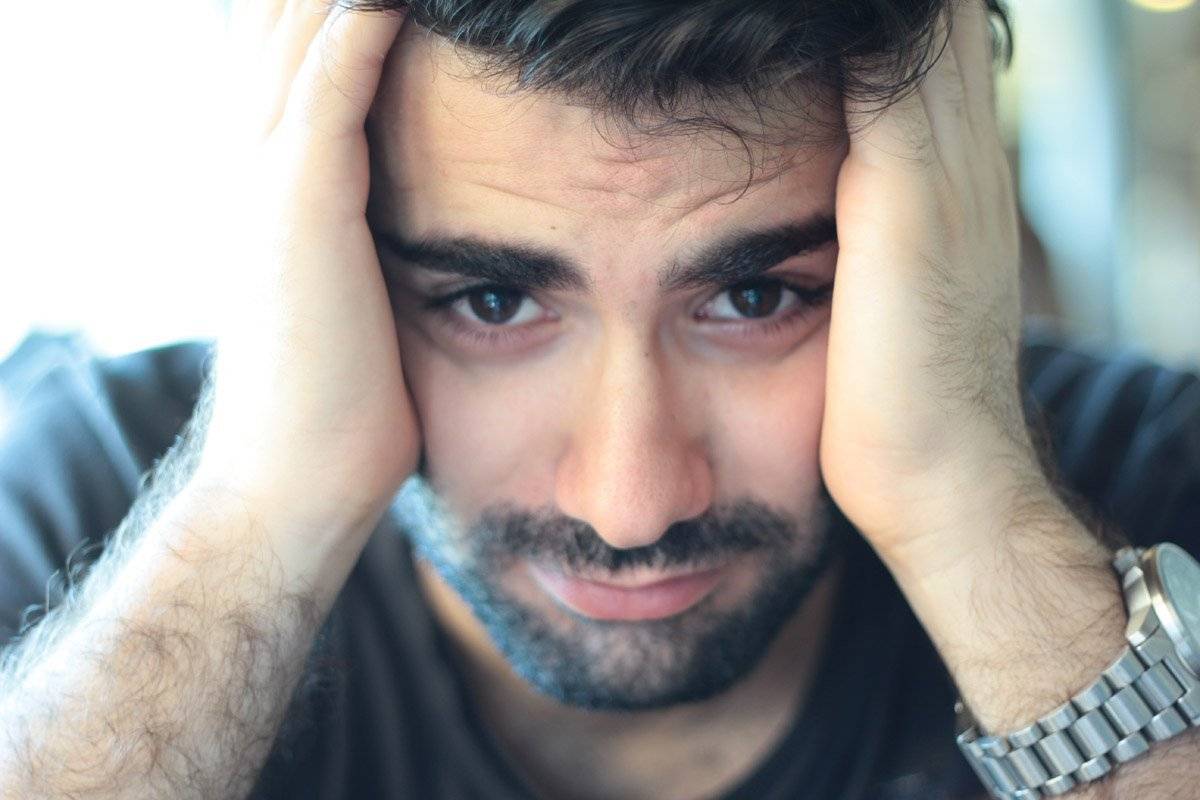A tiny face sculpture at the Amasya Archeology Museum
During the Ottoman period, the shahzadahs were sent to Amasya for state administration and they were provided with training here. Most of the sultans were raised in this rare city. So, in a sense, the first internship of the state administration was teached in these lands, so it is called the city of the shahzadahs. Meanwhile shahzadah means the Ottoman prince.
Amasya's first known name was Amaseia, the name was given by Strabon, the world's first geographer.
Amasya Archeology Museum
As the most modern and richest museum of the region with approximately twenty-four thousand pieces of archeology, ethnography, coins, stamps, handwriting and mummies belonging to 11 different civilizations, it serves the culture and tourism of our country.
The triplex museum has a basement with two large saloons displaying archaeological, coin and ethnographic artifacts, a laboratory and other service units, a lower-floor buffet and rest room and a small exhibition hall. In the garden stone artifacts and six mummies of the Ilhanlı period are exhibited within the tomb of Sultan I. Mesut.
Sub Hall Dispatch
Amphorae
Roman and Byzantine eras, made of terracotta, with double handles, pointed bottoms, forms are among the interesting works of the museum. In antiquity, they were used to transport and store wine, olive oil and similar liquids. Bafra near the ship was known to have been removed from the sunken ship in 1977 were brought to the museum.
Sarcophagi
In this section, four sarcophagi are exhibited. Three are made of baked clay and the other is bronze.
Bronze sarcophagus
It is made of forging technique and has the shape of a modern bathtub. There are four symmetrical ring handles on the corners near the rim. This great treasure was found out in the Tumulus which is called Taşova District, Esençay Town, Çakırmıstığın Hill . It is the work of the Hellenistic Period.
Cooked Soil Sarcophagi
One is angular, the other cylindrical, and the third is tub-shaped. They were used as graves during the Roman period.
Sculptures
Two sculptures from the Hellenistic and Roman Periods are exhibited in this section. There is a high relief of Dionysus and his son.
In the section where sarcophagi are found, the original marble inscriptions of the mosque, madrasah and similar buildings built in Seljuk and Amasya during the Ottoman period are exhibited.
Carpets, rugs and kilims brought from Azerbaijan and its region in Amasya during the Ottoman-Russian War of 1897-1898 were exhibited in this section. Milas, Kırşehir and Avanos carpets and kilims are also located in this section.
Byzantine Period Door Wing
Gümüşhacıköy District belongs to a monastery in Gümüş Town. It is decorated with grape leaf and grape bunch inside the circles which are made by embossing technique and which symbolize abundance and which are formed by the hanging branches around each other. It is a work belonging to the Late Byzantine Period.
Seljuk Period Gate
It is the original gate of Gökmedrese which was built in 1266-1267 during the Seljuk Period. It is a monumental piece made of ebony wood, double-winged. In the grift inscription written in Arabic sülüs line in the pediment section, in the borders of the pedestal, with the rumi and elaborate round arches, which are carved with carving technique, "Man is cut off by himself when he dies, except for three things, they are either charity or carnivorous. Or it is the righteous child who prayed to Him ". In the navel of the door, triangular, pentagonal, and octagonal shapes formed by crossing of broken lines are decorated with rumi and twisted motifs.
Mosque Gate of the Ottoman Period
It is the original gate of the Mehmet Pasha Mosque dating back to the Ottoman period. It is a double-winged door decorated with pentagons and star motifs which are made up of broken lines drawn by Kündekârî technique. Classical Ottoman is one of the rare examples of woodworking. In this section, the 19th century. There are cupboard covers and sherbets compiled from examples of Amasya civil architecture.
Top Salon Dispatch
This is divided into two sections, archeological and ethnographic. In the last section of the archaeological section there are showcases where coins and revelers are exhibited.
Bronze Age Works (3500-2100 BC)
The artifacts representing this age in the museum were exhibited in three separate windows. In the first two showcases are black and red colored, well-polished and slightly grooved mine-like ornaments made from terracotta, handled and handled sphere body with rounded rims, flat bottoms, pottery and tests.
All of the works excavated in the Amasya center Mahmatlar and Merzifon Oymaağaç Village are hand products.
Other showcases include bronze daggers, axes, bone needles, spindle whorls and stamp seals.
Hittite Age (1750-1200 BC)
It is exhibited in two separate windows.
In the first window; beak mouthed strainer, camel feathered dough, baked clay testers, bowls, rugs, and an altar made from terracotta.
In the second window; bronze and stone seals, bull heads from terracotta, human figures, idols and ritons of various types of terracotta, and triple sacred vessels used in religious ceremonies are exhibited.
Hittite God Statue
Known as "Amasya Statue" or "Hittite Storm God" in the archaeological literature, this work is one of the unique works of world archeology.
It was found in 1962 in a mound in the town of Doğantepe in Amasya by chance. In the bronze, the legs of the work made with the casting technique and some fragments have not yet been found.
It is similar to the depictions of gods in the rock embossments of the Hittite Imperial period, especially the reliefs of gods in the open temple of Boğazköy (Hattuşaş) Yazılıkaya.
It is 21.5 cm in height and 1.340 gr. In height with the pointed cone, short skirt, standing stepped forward.
It belongs to the Hittite Imperial Period (1400-1200 BC) and is the largest human sculpture among other metal sculptures that can be found. Thick eyebrows, pitted eyes, with smooth grooved lines, seem to be moderate, with a strong and proud expression.
Urartu Age (900-600 BC)
The works belonging to this civilization, which lived in Van province in Eastern Anatolia, came to the museum through purchase. There are bronze bracelets with stylized lion heads, bronze vessels and a boiler handle on the display.
Phrygian Period (850-600 BC)
BC to Anatolia The Phrygians, who came with around 1200 tribal migrations, reigned in areas where the Hittites lived. Their capitals are Gordion near Ankara. The museum has works of this age; camel horns, carpets, alfalfa mouthed, wide body, single-handled flat bottom, cream-colored slipped over, red, brown paint and belt-shaped motifs parallel to the body, as well as ritons from various animal types used for libation on special occasions.
The Scythian Age (6th century BC)
It was an excavation made in 1970 in Gümüşhacıköy District, İmirler Village.
A sculpted iron sword found in a scythe grave of a Scythian cavalry, a bronze beehive harp with bronze, a large amount of bronze willow-leaf shaped arrowheads, a piece of horse harness gem and a bronze medallion with a relief the resulting artifacts are exhibited.
The Hellenistic Age (330-29 BC)
Among the artifacts exhibited in the museum belonging to this era are a large bowl with a wide rim, a flat base, an open tile color paste, a double and single handled plates made of reed, testers, a depot and decorated with relief with grape bunch and vine leaf motif. There is a flat plate.
In this section, there is a work made of terracotta, concave rim, bumpy body, rounded ring, double handles, divided on the body by metoplaces, brown on the beige floor and duck figure on the inside. A baked soil test is also exhibited, which is decorated with a geometric shape, a bowl of a geometric age, a rounded rim, a short cylindrical neck, a red figure technique on the body, and a swan figure.
Roman Age (29 BC-476 BC)
The works belonging to this age form the richest collection of our museum. Five separate displays were presented in three groups.
Glass Works
Most of the Roman artifacts form tear bottles, fragrance vessels and rugs with their thin, long forms. In this display, a work of amphora type, double handled, yellow colored body with round mouthed, short neck, elongated, narrowed to the base, and black, blue and brown colors decorated with sand mold technique (7th century BC) is also exhibited.
Roman Ceramics
Double and single handled tests are in different forms.
Usually the open tile is dyed in color and painted red. Some of them have beads in the body and handle. Similar bowls are also found.
Masks
It is made of terra cotta, with only faceted lines, mouths singing theater masks.
Women's Jewelry Goods
Most of the jewelery made of gold, silver and glass are rings and clues. Human and animal figures are carved on the stones of the rings, which are agate.
Clues are very diverse in shape. Some of the pendants have precious stones placed. Besides these, bracelets made of colored glass and diadems made of gold are also exhibited.
This section contains a necklace, a pair of earrings and a ring from the Roman period, made up of a series of double-headed bird figures earned to the museum in 1988.
Bronze Containers
They are single handled, handled and only boiler handled. It is Roman period works for daily use with tattoo and tattoo technique. In a separate display, the bronze objects of a dead donut, generally left in child graves, are exhibited. In particular, bull and eagle statuettes and snake figure are among the notable works.
Candles
They were used as lighting tools in the Hellenistic and Roman Periods. These artifacts made of terracotta are of various sizes and types, usually tile color.
Coins
The majority of the coins exhibited at the end of the archaeological section consist of Hellenistic, Roman bronze coins and Byzantine copper, Seljuk Period Silver and Ottoman Period gold coins and placed according to chronological order.
The last two displays are exhibited in rendezvous.
A bronze treasure belonging to the Hellenistic Transformation in one of the windows and 1134 bronze squeezed treasures of nine different types which were beaten in Istanbul and Antioch during the period of the Roman Emperor Great Costantinus (AD 306-337), copper coins of the Byzantine Age and copper Seljuklu the reefs are exhibited.
In the other villa, sikkelerle, İlhanlı and Ottoman period silver coins belonging to the Medieval Austrian Duchy are exhibited.
Byzantine Age (476-1453 AD)
The works belonging to this period were presented in the last showcase of the archaeological section. Three pieces of terracotta pots were exhibited in 1992 with single handled cream-colored testers, bronze-made candles, spindle whorls, jewelery, stone sacred bread stamps and lead seals.
These works are made of tile color paste, broad, wide rim, concave body, round ring. Inner and outer faces are pale yellow color; stylized animal figures in the center of the plate on the lining. There are geometric stars and calligraphic ornaments on the inner edges. (12th-13th centuries AD)
Open Air Dispatch
In the museum garden to the west of the museum building, there are exhibited stone works of great dimensions of Hittite, Hellenistic, Byzantine, Ilkhan, Seljuk and Ottoman periods. Hittite Door Lions brought from Dogantepe and Esençay bells, Hellenistic and Roman tombed and busted tomb stalks, Ionian and Corinthian column headings, monumental building pieces, sarcophagus made of marble and limestone of Roman period, tomb stones of Byzantine period , relief sarcophagi, architectural pieces, Ilhanlı, Seljuk and Ottoman era inscriptions, sarcophagus type headless and untitled tombstones, baked clay grocery cubes and Sultan II. The original column headings of the last community site destroyed in the 1939 earthquake of the Beyazit Mosque are exhibited.
Rome Book
It is located in the garden in the west of the turban. It was found on the basis of a construction in Amasya Merkez Yüzevler District. It is a dedication book made of limestone stone belonging to a large structure. This Greek inscription was made by the Pontus provincial president and was dedicated to the Roman Emperor Alexander Severus and his mother Iulia Mammia.
Spindle Stones
Ready to Blog & Earn?
With TravelFeed, easily start your own travel blog and earn as you go. It's the smart platform for travelers who want to profit from their passion. Create a free account
Marble milestones used as milestones found in various regions of Amasya are exhibited through "Ancient Roman Road" extending from Erba, Esençay, Çakırsu, Upper Baraklı, Yassıçal, (Ebemi) and Zile. Within these milestones, there are 21 figures on the round column shaped stones found in situ in Uygur Town, and the Roman Emperors II. Contantinus and Diocletianus and the names of the provincial administrators (governors) are written. Works by M.S. It belongs to the period 237-305.
Mummies
In the garden of the museum six mummies of the Ilkhanid period are exhibited in the Sultan I. Masud shrine. This section is the most visited section of the museum.
The Mummies are the Prince Cumudar formerly minister of Anatolia, the Amir of Amasya Isbuğa Nuyin, Mr. İzzettin Mehmet Pervane , his handmaiden, a boy and a girl child. These were brought from Amasya Burmalı Minaret and Fethiye Moses.
Don't Forget: Get Travel Health Insurance!
To make your trip a worry-free experience, TravelFeed recommends SafetyWing Nomad Insurance. It provides comprehensive health coverage while you travel, so you can focus on exploring, not the unexpected. Get a quote here
Dear Steemian friends, i hope you enjoy the the Amasya visit part III , it is the last and the longest part of our journey.I have made this story in three parts because of the its lenght.Meanwhile if you have questions in your mind about this visit or about Turkiye you can always ask me in discord or you can also make comment so i can try to answer. Have a nice day all of you.!
All photos and drawings are belongs to me and for sale in HQ digital format for Steem/SBD, please contact if interested at discord @mnallica
| Camera | Sony a7R |
| Location | Amasya-Turkiye |
|
Hi, i am Mustafa...I hope you enjoy my works my Steemian friends and if you like please resteem and upvote my works to support me...!! |
|
Travel Resources for your trip to Turkey
Recommended by TravelFeed
Flights: We recommend checking Kiwi.com to find the best and cheapest flights to Turkey.
Accomodation: Explore the best places to stay in Turkey on Booking.com, Agoda and Hostelworld.
Travel Insurance: Medical emergencies abroad can be pricey, but travel health insurance is not. We always use SafetyWing for affordable and reliable coverage.
Car Rental: For hassle-free car hiring, DiscoverCars is our trusted choice with a wide selection of vehicles.
Internet: Got an eSIM compatible phone? Airalo is perfect for reliable internet access during your trip. Just install it before you go, and you're set!
Day Trips & Tours: We recommend GetYourGuide for a variety of well-organized and enjoyable activities.
Travel Planner: Need a hand planning? Our free travel planner chatbot is your personal guide to Turkey. Chat now.
Disclosure: Posts on TravelFeed may contain affiliate links. See affiliate disclosure.
